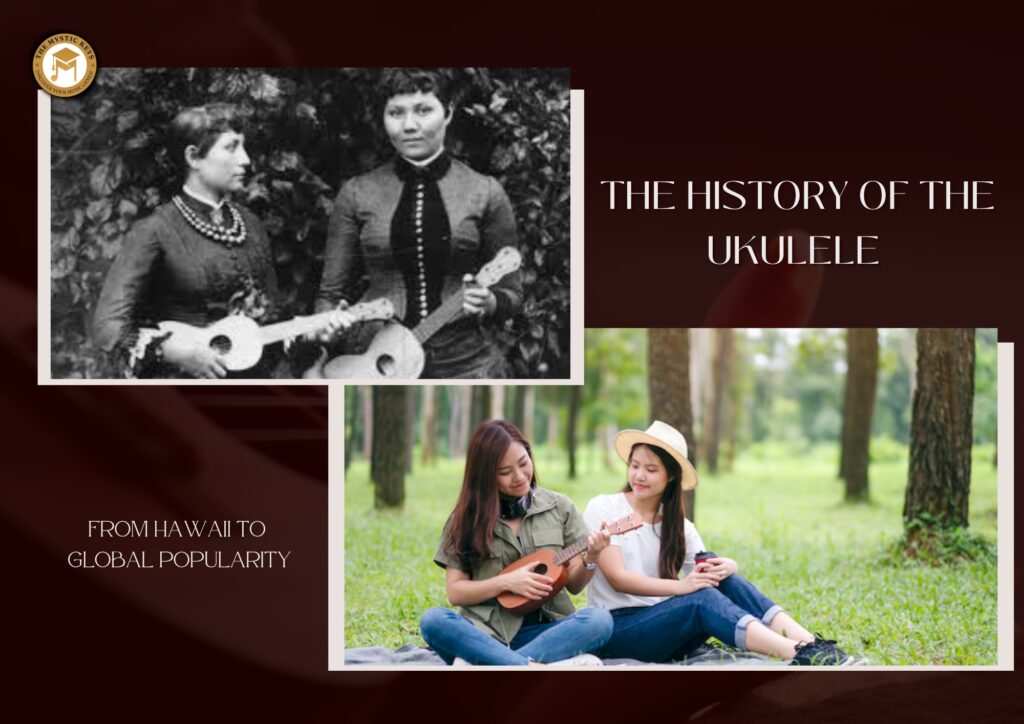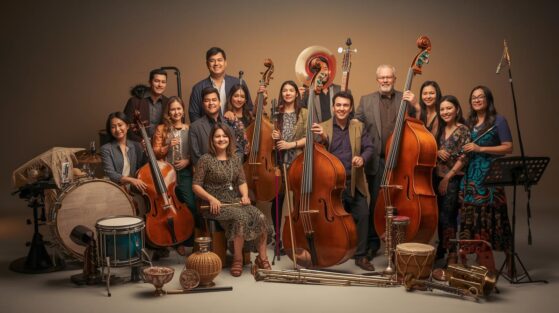The History of the Ukulele | From Hawaii to Global Popularity
Discover the history of the ukulele, a beloved string instrument known for its distinctive sound and charming size. The ukulele’s journey blends Hawaiian traditions, Portuguese immigrants, and global pop culture, creating a fascinating story. Dive into its early beginnings and explore how it rose to international popularity. From Hawaiian folk music to modern pop hits, the ukulele continues to captivate musicians worldwide. Learn about its cultural significance and the global community of ukulele enthusiasts who keep its legacy alive. Whether you’re a beginner or a seasoned musician, the ukulele’s timeless appeal speaks to all.

The Origins of the Ukulele
The ukulele’s roots trace back to the Madeira Islands in Portugal, where musicians played a small, four-stringed instrument called the machete. Known for its bright, distinct sound, the machete was common in Portuguese music. In the late 19th century, Portuguese immigrants from Madeira and the Azores arrived in Hawaii, bringing the machete and other instruments with them.
In the early 1880s, Hawaiian musicians modified the machete to create the ukulele. They made it slightly larger, changed the tunings, and enhanced its resonance. The name “ukulele” means “jumping flea” in Hawaiian, referring to the lively sound and rapid finger movements needed to play it. The ukulele quickly became a key part of Hawaiian music, blending local traditions with foreign influences. Over time, it grew in popularity, capturing the hearts of musicians and audiences alike. Its unique sound became synonymous with the island spirit, spreading throughout the world.
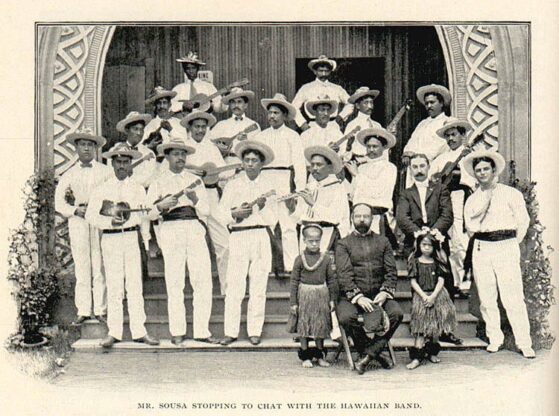
The Ukulele’s Emergence in Hawaiian Music
By the late 19th century, the ukulele had become a key part of Hawaiian culture. Musicians frequently featured it in hulas, slack-key guitar performances, and folk songs. Meanwhile, artists like Jake Shimabukuro and Herb Ohta mastered its rich tones, developed new techniques, and helped popularize it.
As a result, the ukulele soon became a symbol of Hawaii’s relaxed yet vibrant spirit. While early versions used local koa wood, by the early 20th century, mass production with spruce and mahogany made the instrument more accessible. Consequently, as its popularity grew, the ukulele spread beyond Hawaii, finding a place in jazz, folk, and even rock music. By the mid-20th century, it had become a staple in American pop culture, thanks to artists like Tiny Tim and Elvis Presley. In recent years, the ukulele has experienced a resurgence, fueled by viral videos and modern musicians. Ultimately, the history of the ukulele reflects its incredible journey from a regional folk instrument to a global musical phenomenon.
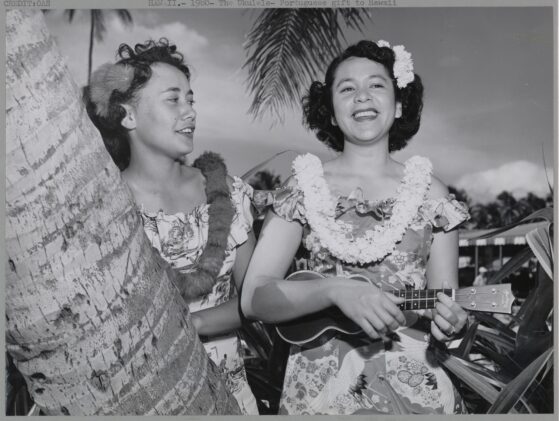
The Ukulele’s International Popularity
As the ukulele thrived in Hawaii, it soon gained global attention in the early 20th century. In 1915, the Panama-Pacific Exposition in San Francisco introduced mainland Americans to the instrument, igniting a Hawaiian music craze. Shortly after, the ukulele’s popularity soared, with Hollywood featuring it in films and jazz bands incorporating its unique sound.
Meanwhile, the instrument became a symbol of a carefree, tropical lifestyle romanticized by the media. As a result, its influence spread beyond the U.S. to countries like Japan, Brazil, and the UK. During this golden age, the ukulele firmly secured its place in mainstream music, with musicians like Cliff Edwards (“Ukelele Ike”) turning it into an American pop icon. Additionally, radio broadcasts and records further expanded its reach, bringing its cheerful tones into homes worldwide.
At the same time, music publishers printed ukulele sheet music, making it easier for beginners to learn popular songs. Likewise, schools introduced the instrument in music education, helping young musicians develop fundamental skills. Even as jazz evolved and musical trends shifted, the ukulele remained a favorite for casual players. Furthermore, its affordability and portability ensured its accessibility to all. By the mid-20th century, the ukulele had become a household staple, shaping music across generations.

The Ukulele in the Mid-20th Century
The ukulele thrived in the early 20th century but lost popularity in the 1940s and 1950s as the electric guitar took over. Yet, it never vanished. Dedicated musicians, especially Hawaiian artists, kept the tradition alive.
In the 1960s and 1970s, Hawaii saw a cultural revival, bringing the ukulele back into the spotlight. Traditional Hawaiian music returned, and the ukulele reclaimed its role in folk performances. During this time, it reentered the mainstream, though in a more niche capacity.
The History of the Ukulele took another turn in the late 20th century when artists like Israel Kamakawiwoʻole introduced it to new audiences. His rendition of Somewhere Over the Rainbow showcased the ukulele’s emotional depth, sparking renewed global interest. By the 2000s, the instrument surged in popularity again, embraced by indie musicians and pop artists. Today, the ukulele stands as a symbol of joy, simplicity, and cultural connection, continuing its remarkable journey across generations.
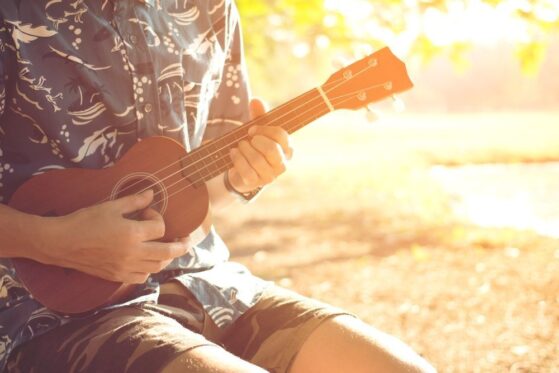
The Ukulele in the 21st Century | A Global Phenomenon
In the late 1990s and early 2000s, the ukulele underwent a dramatic resurgence in popularity. This time, however, it was driven by the rise of internet culture and a new generation of musicians looking for accessible, portable instruments that could produce unique sounds. Social media platforms like YouTube allowed ukulele tutorials and performances to reach global audiences, and musicians such as Israel Kamakawiwo’ole and Eddie Kamae played a pivotal role in popularizing the instrument once again, introducing a new wave of ukulele lovers.
Perhaps the most significant influence on the modern ukulele boom came from artists like Jake Shimabukuro, a virtuoso who introduced stunning technical skill and emotive expression into his ukulele performances. His covers of popular songs and original compositions, including the viral performance of “While My Guitar Gently Weeps”, showcased the ukulele’s ability to transcend traditional boundaries, appealing to fans of various genres from classical music to rock. Shimabukuro’s success solidified the ukulele’s place in the modern music world, introducing it to younger, diverse audiences.
In recent years, the ukulele has made its way into mainstream pop music, appearing in hits by artists such as Vance Joy with the song “Riptide”, Train’s “Hey, Soul Sister”, and Bruno Mars’s “Count on Me”. The instrument’s simplicity, portability, and joyful sound have made it a favorite for both amateur musicians and seasoned professionals.

The Global Ukulele Community
Today, a thriving global community of players, teachers, and enthusiasts keeps the ukulele alive. Online forums, social media groups, and festivals celebrate its fun, creative, and inclusive spirit. Music schools, including The Mystic Keys, have embraced it for its accessibility to beginners and versatility for advanced musicians.
The ukulele has sparked global collaborations and innovative performances, solidifying its cultural impact. From local groups to international pop stars, it continues to evolve and inspire new generations. The history of the ukulele, from Portuguese immigrants bringing their machetes to Hawaii to its rise in global pop culture, continues to shape its sound and appeal. As more people pick up the ukulele, they connect with a long-standing tradition that blends cultural influences and musical innovation. The instrument’s simple yet captivating nature invites musicians of all skill levels to explore its possibilities, ensuring its legacy endures. Whether in folk, jazz, or contemporary music, the ukulele remains a symbol of creativity and community.
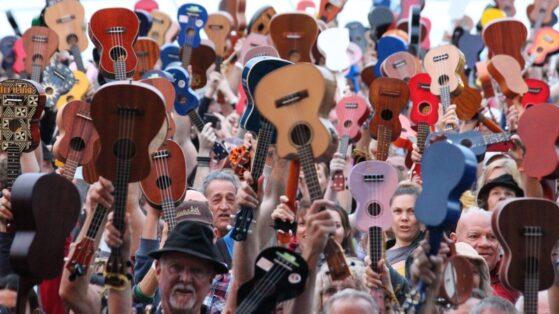
Conclusion
The history of the ukulele is a remarkable journey, from its origins as a small Portuguese instrument brought to Hawaii by immigrants, to its rise as a globally recognized symbol of joy and creativity. This evolution reflects the resilience of cultural traditions and the power of music to unite people across borders. Today, the ukulele remains a beloved instrument for those seeking to express themselves in a unique and accessible way. Whether you’re a beginner plucking your first chord or an experienced musician exploring its depths, its history and future promise new experiences and connections for musicians worldwide.
The ukulele enjoys a thriving global community of players, teachers, and enthusiasts. Online forums, social media groups, and festivals celebrate its fun, creative, and inclusive spirit. Music schools, including The Mystic Keys, have embraced it for its accessibility to beginners and versatility for advanced musicians.
The ukulele has sparked global collaborations and innovative performances, solidifying its cultural impact. From local groups to international pop stars, it continues to evolve and inspire new generations. As it grows in popularity and influence, the ukulele reminds us that sometimes the simplest instruments can make the biggest impact, spreading happiness and warmth with every strum.
Related Blogs
How to Learn Ukulele Step by Step | A Comprehensive Guide
The ukulele is a delightful and accessible instrument that has become increasingly popular due to its cheerful sound, portability, and simplicity. Whether you’re picking up the ukulele for the first time or looking to refine your skills, taking the time to learn ukulele step by step will help you build a strong foundation.
How to Learn Ukulele as a
Beginner?
The ukulele, known for its sunny sound and compact design, is one of the most beginner-friendly instruments to learn. Its cheerful tone and relatively simple structure make it an excellent choice for anyone, whether you’re completely new to music or looking to pick up an additional skill.
Can I Teach Myself to Play
Ukulele?
The ukulele is a charming instrument that has captivated music enthusiasts worldwide, thanks to its cheerful sound and approachable design. Whether you’re drawn to its affordability, portability, or the vibrant energy it brings to any tune, the ukulele is a fantastic choice for anyone looking to step into the world of music.


